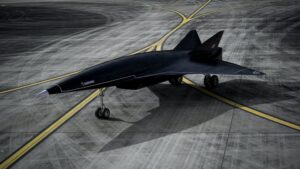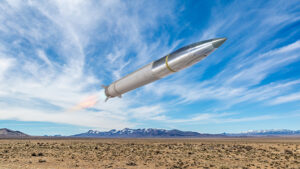
The Atlanta-based Hermeus Corp. said on Dec. 20 that it chose Raytheon Technologies [RTX] Pratt & Whitney F100 turbofan, which powers F-15 and F-16 fighters, as the turbine component of Hermeus' planned Chimera II turbine-based combined cycle engine (TBCC)–a cross between a turbojet and ramjet engine–that is to generate hypersonic flight for Hermeus' reusable Darkhorse drone. Ramjets, which function best between Mach 3 and Mach 5, mix compressed air with ignited fuel to create thrust. Hermeus is designing the Darkhorse…














